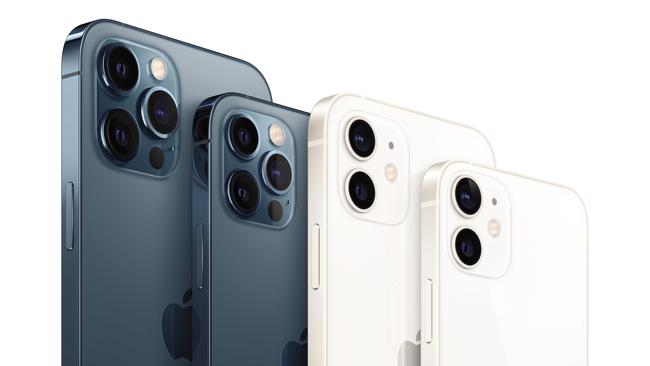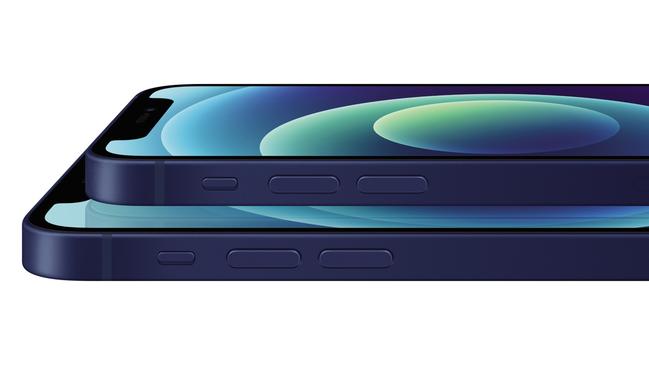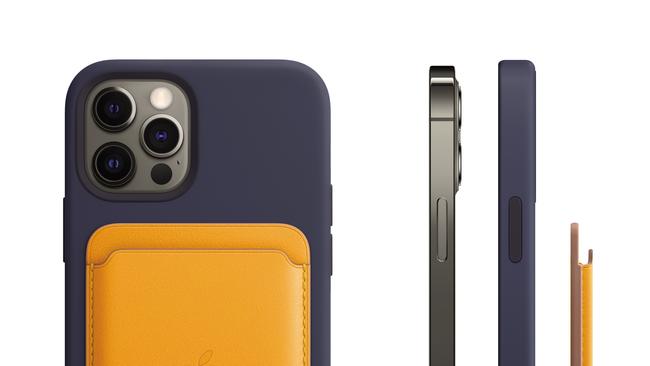Apple iPhone 12 Pro Australian review: what the first 5G iPhone gets right, and what it leaves out
It is one of Apple’s first 5G iPhones, the first with a LIDAR scanner, and it introduces a magnetic power system. Is the iPhone 12 Pro worth the upgrade or should you hold out for more?
As many as two million people pre-ordered a new iPhone 12 within 24 hours of it going on sale, according to one high-placed analyst, potentially making Apple’s latest launch one of its biggest to date.
After all, only two of its four new smartphones actually went on sale last week, and will appear in stores this Friday.
But is the promise of faster downloads, better night portraits, and magnetic wallets enough to justify an upgrade this year? And should you buy an iPhone 12 Pro or hang off for its bigger brother with more camera upgrades?
We tested an iPhone 12 Pro before launch to help you decide.
5G OR NOT 5G
Apple didn’t rush to deliver 5G but that may have been to its benefit.
Some early 5G phones burned through batteries like they were designed to melt cheese.
But 5G hardware has matured and the iPhone 12 Pro shows it.

Battery life wasn’t an issue for this smartphone over several days of testing, even though 5G does tax it more.
5G speed tests also showed the iPhone 12 Pro is capable of getting the best of Telstra’s 5G signals. It regularly clocked download speeds of more than 400 megabits per second over 5G, with upload speeds nudging 50mbps.
Apple has also wisely added 5G customisations to its menus for those keen enough to dig for them.
The “5G On” option promises to connect to 5G whenever it is available — hang the battery expense — and “Allow More Data on 5G” delivers higher quality streaming video if you’re hooked up to a 5G network.
Without these options employed, testing showed, your 5G phone will regularly revert back to the 4G network, almost neutralising any benefit in owning a 5G phone.
It’s also worth noting you need to reboot your iPhone if you choose higher 5G use. It won’t activate until you do.
IS THE CAMERA REALLY DIFFERENT?
Changes to the iPhone 12 Pro’s camera are the second biggest hardware upgrade in this handset, but may be the big reason people upgrade to it.
Apple retains the ultra-wide, wide and telephoto lenses in the iPhone 12 Pro, though does give the wide lens a slightly larger aperture for lowlight shots.
The company also adds a LIDAR sensor to its rear camera collection, which uses light to measure depth.

This ensures the camera locks focus on subjects slightly faster than before, and that focus is sharp even in challenging lighting.
This is particularly evident in new night mode portraits that use a combination of hardware and software to create moody and crisp images worth of sharing.
The iPhone 12 Pro also gets a Dolby Vision, 60-frames-per-second boost for video, and Smart HDR mode that combines three photos into one to deal with the highlights and shadows of challenging lighting conditions.
The camera on this phone also appears to deliver more accurate white balance than many of its rival devices, time after time.
Apple also promised a new file format for photos taken with this smartphone, called ProRAW, that will retain more information that serious photographers can use to do more during post-production.
Unfortunately, it won’t become available until later this year, which is likely to disappoint some early buyers.
BACK TO THE FUTURE
There’s no escaping it: the iPhone 12 Pro looks like a throwback to the iPhone 5.
What’s surprising is that’s not a bad thing. It still appears thoroughly modern.
The band around the iPhone 12 Pro is a shiny stainless steel that is an upgrade on the brushed metal of the past, and the matt glass panel feels fresh.

The screen on this iPhone is also slightly larger than its predecessor, at 6.1 inches rather than 5.8, despite very modest size and weight gains (it added one gram).
The front panel on this iPhone has also been upgraded to Ceramic Shield glass, which promises to be four times as crack-resistant (mercifully, something I didn’t test).
And the iPhone 12 Pro is slightly more water-resistant than the last, promising to withstand dunks below 6m of water for 30 minutes.
MAGNETIC ATTRACTION
It’s a hidden feature in the iPhone 12 Pro: a magnetised ring that will help this phone power up or piggyback an accessory.
Apple iPhones have charged wirelessly with Qi for years, but MagSafe adds something extra. The new magnet is powerful enough to snap to the charger, leaving no doubt about whether it’s in position.
Apple will also deliver leather wallets with hidden magnets that you can snap to the back of this phone.
A word of warning, however: don’t add all your loyalty cards or hotel keys to this pocket as MagSafe may demagnetise less powerful cards.
IPHONE 12 PRO VERDICT
Apple has nailed the big upgrades to the $1699 iPhone 12 Pro: its 5G connection and camera.
By arriving late and adding 5G customisations, the company has skilfully avoided most of the pitfalls that come with next-generation mobile technology (until faster mmWave 5G arrives next year).
The iPhone 12 Pro camera also shows obvious benefits from the addition of a LIDAR scanner, producing sharp images in dim lighting, and warmer, more flattering photos than many rival handsets.

It’s disappointing that Apple ProRAW mode won’t be available at launch, however, and dedicated mobile photography fanatics are likely to be dismayed that some camera upgrades will only be available in the larger, pricier Pro Max model this year. Those additions include sensor-shift image stabilisation and a larger sensor.
Apple also appears to have missed an opportunity to bring back Touch ID for mask-wearing users this year, perhaps due to timing, and the new iPhone generation doesn’t add a faster screen refresh rate as tipped, perhaps down to battery considerations.
Despite these omissions, the iPhone 12 Pro adds and improves enough features and hardware to earn it a loyal following this year … even if we’re unlikely to see those famous long queues outside Apple Stores.
